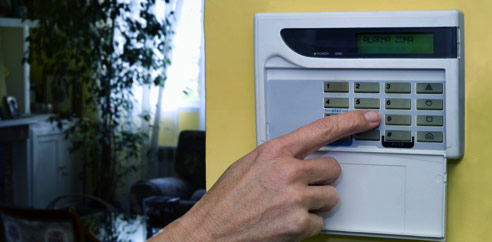Did you know there has been a dramatic reduction in fire fatalities and injuries over the last 30 years because more people use smoke alarms? These facts are according to the Underwriters Laboratories study, “Smoke Alarms and the Modern Residence Fire.”
 In 1977 home fires caused 5,865 deaths and over 31,000 injuries. This was at a time when only 22% of homes had smoke alarms installed, according to information in the UL report.
In 1977 home fires caused 5,865 deaths and over 31,000 injuries. This was at a time when only 22% of homes had smoke alarms installed, according to information in the UL report.
In 2009, when over 95% of homes had smoke alarms, the annual death rate attributed to home fires dropped to 2,565, a 56% decline, and injuries dropped by more than 59%. The reduction in deaths during this time has not been entirely attributed to the increased use of smoke alarms, though it is considered a leading factor.
Research now shows that today people have less time to escape a home that’s on fire than they did 30 years ago. That’s because manufacturers of home furnishings have shifted from using natural materials like wood, cotton and wool to synthetic materials like polyurethane foam for padding and synthetic fabric covers that typically ignite more quickly.
These synthetic materials also burn more intensely, release their fire-enabled energy faster, and create more smoke than natural materials. We’ve seen how effective smoke alarms can be in warning occupants of fires but now they have to work even harder to get the job done.
Currently, there are two types of smoke detection technologies available for residential smoke alarms: ionization smoke detection, which is generally more responsive to fires with fast-moving flames, and photoelectric smoke detection, which is usually more responsive to smoldering fires.
The most common type of smoke detectors, the ones based on ionization technology, may not protect your family in a fire, according to a video segment on the TODAY show by National Investigative Correspondent Jeff Rossen. While they work well to detect fires with fast-moving flames, experts say some of the most deadly fires are the smoldering, smoky kind that can fill your home with toxic gases while you sleep.
In those fires, ionization alarms don’t work well, going off way too late – or not going off at all, Rossen notes. “And that means the individuals could have a fire in their home and never receive a warning,” Don Russell, an engineering professor at Texas A&M who’s run hundreds of tests, tells Rossen. Photoelectric is the way to go in those situations.
For the best protection, the National Fire Protection Association recommends you use both ionization and photoelectric alarms, or an alarm that includes both technologies in a single device, called a dual alarm. New smoke detection technologies are also being developed so manufacturers can produce smoke alarms that react more effectively to fires in today’s homes.
Additionally a home fire alarm system with central station monitoring offers another layer of protection.
The NFPA standard requires that alarm monitoring companies verify within 90 seconds if actual incidents are occurring before they can alert 9-1-1. American Alarm’s average response time is 21 seconds, saving valuable time that can mean protecting your home and family.
From September 1 to September 30, 2012, Underwriters Laboratories sampled approximately 1,000 fire alarm system monitoring accounts. In that month, they received over 68,000 signals, including fire alarm, supervisory, trouble, and test signals.
Of the signals handled by central station operators, only 3.4% required action, and only 0.15% resulted in fire dispatch.
Whether you’re asleep, away from home, or in your home, our 24-Hour Security Command Center is always available, monitoring smoke detectors to respond and send help when it’s needed most.
Next Steps:
 The fact is that a monitored home fire alarm system is the best defense in the event of a fire. However, having portable fire extinguishers in your home can also help save lives and property by enabling you to put out a small fire or at least contain it until the fire department arrives.
The fact is that a monitored home fire alarm system is the best defense in the event of a fire. However, having portable fire extinguishers in your home can also help save lives and property by enabling you to put out a small fire or at least contain it until the fire department arrives.

















 Thanksgiving is the day when people across America gather with family and friends to celebrate, cook, share good food and conversation. Thanksgiving is also the leading day of the year for home fires involving cooking equipment, according to the
Thanksgiving is the day when people across America gather with family and friends to celebrate, cook, share good food and conversation. Thanksgiving is also the leading day of the year for home fires involving cooking equipment, according to the  When it comes to the damage done by electrical fires every year, the numbers are staggering.
When it comes to the damage done by electrical fires every year, the numbers are staggering. When it comes to lighting your holiday tree, the number one holiday safety tip from fire officials is “never use lighted candles as decorations” — so imagine our concern when we saw this
When it comes to lighting your holiday tree, the number one holiday safety tip from fire officials is “never use lighted candles as decorations” — so imagine our concern when we saw this 
